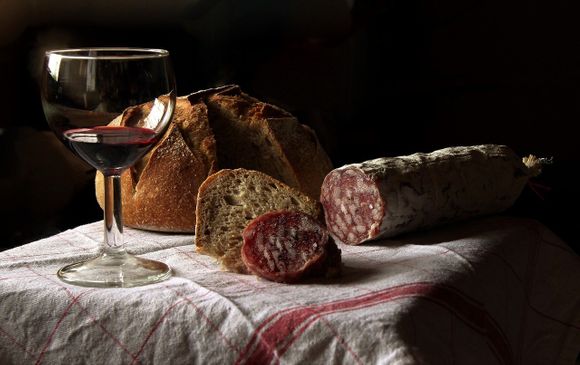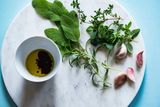Author: Rositsa Tashkova, Master of Molecular Biology and Microbiology
About 2 million people worldwide die each year from liver disease. Unfortunately, the awareness of the deterioration of the liver comes only when it’s too late and symptoms are already showing. This makes preventive examinations especially important.
The most common diseases of this organ are viral hepatitis (hepatitis B and C), cirrhosis, non-alcoholic fatty liver disease (NSCLC), steatosis, fibrosis, alcoholic liver disease (alcoholic hepatitis), liver cancer, liver failure. Not everyone knows that elevated blood cholesterol levels are also directly related to the liver.
The liver is the main purifying organ in our body - it has the task of neutralizing toxins and harmful substances that enter the blood. This makes it particularly sensitive to the use of drugs and herbs, especially in some diseases. Therefore, consultation with your doctor is mandatory before you start taking any herb for liver problems to avoid potential hepatotoxicity and additional damage to this extremely important organ.

IIn this article we will look at herbs that have been shown to help with some liver diseases:
- Chronic hepatitis
- Fatty liver disease (hepatic steatosis)
- Cirrhosis
Most of the information is taken from the scientific article "Current Status of Herbal Medicines in Chronic Liver Disease Therapy: The Biological Effects, Molecular Targets and Future Prospects", published in 2016 in the International Journal of Molecular Sciences. [ref.1]
Medicinal plants for chronic hepatitis
Chronic hepatitis is an inflammation of the liver. It is usually caused by viral infections, autoimmune diseases, or toxic substances such as drugs or alcohol.
Viral hepatitis is the most common liver disease. Over time, it can develop into fibrosis and cirrhosis. The causative agents are hepatitis B virus (HBV) and hepatitis C virus (HCV). Currently, more than 30% of the world's population is infected with HBV.
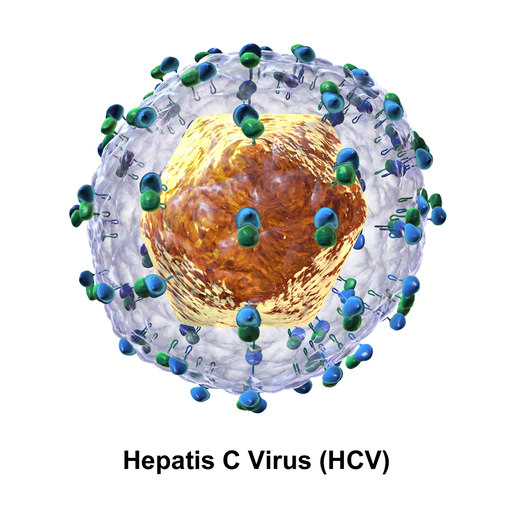
- Licorice (Glycyrrhiza uralensis) - the active substance of licorice is called glycyrrhizin. Various studies have established its various functions in protecting the liver - has an anti-inflammatory effect on the liver by several mechanisms, inhibits the release of viral particles in HCV infection, controls the reproduction of HBV [ref.2], lowers liver enzymes ALT and AST. It is important to keep in mind that prolonged use of licorice can lead to dangerous side effects, including high blood pressure and low levels of potassium in the blood.
- Milk thistle (Silybum marianum) - the active substance of milk thistle, with effects on the liver, is silibinin. It is extracted from the seeds of the plant. Inhibits HCV and lowers ALT, AST and alkaline phosphatase levels in patients with chronic hepatitis. [ref.3] Fortunately, no side effects from the use of milk thistle have been identified.
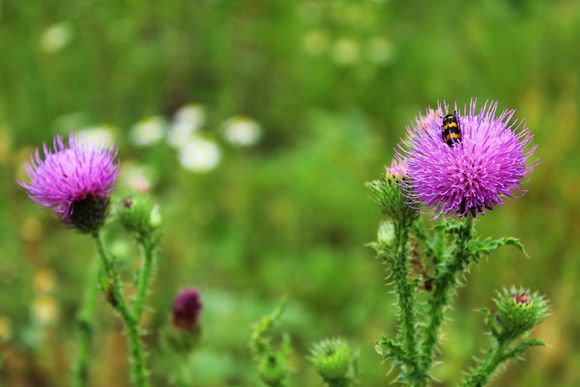
- Gale of the wind, Stonebreaker, or Seed-under-leaf (Phyllanthus niruri) - according to some studies, the aqueous extract of the plant can help with viral hepatitis B. Side effects are upper abdominal pain and diarrhea.
- Baikal skullcap or Chinese skullcap (Scutellaria baicalensis) - the substance baikalin from the herb seems to accelerate the regeneration of liver cells and inhibits the onset of programmed cell death (apoptosis).
- Mongolian milkvetch (Astragalus membranaceus)- the aqueous extract of the root of the herb can help with chronic viral hepatitis B and against the occurrence of liver fibrosis. There are no known side effects, but it may interact with some medications.
Medicinal plants for fatty liver disease (hepatic steatosis)
Hepatic obesity or steatosis is a reversible pathological process in which large vacuoles with triglyceride fat accumulate in the liver cells.
Fatty liver disease is usually caused by excessive alcohol consumption or metabolic disorders such as obesity, insulin resistance and dyslipidemia.
Alcoholic fatty liver disease (ALD) refers to alcohol-related steatosis, while nonalcoholic fatty liver disease (ALD) means that the primary cause of steatosis is not alcohol. Steatosis predisposes the liver to inflammation and fibrosis.

In developed countries, fatty liver disease is the most common liver disease, the prevalence of which ranges from about 20% to 60%.
For those with early stage non-alcoholic fatty liver disease, gradual weight loss is the only solution to prevent the progression of the disease.
According to recent studies, some herbal products appear to have positive effects on this potentially reversible disease. Both laboratory and clinical studies have suggested that medicinal plants may have a moderate benefit in its treatment.
- Cardus marianus, Milk thistle, Blessed milk thistle, Marian thistle, Mary thistle, Saint Mary's thistle, Mediterranean milk thistle, variegated thistle, and Scotch thistle (Silybum marianum) - after intake of white thistle seed extract, a decrease of hepatic steatosis was observed in patients with non-alcoholic fatty liver disease in ultrasound results.
- Baikal skullcap or Chinese skullcap (Scutellaria baicalensis)- according to a clinical trial, the root of Baikal hellebore has a protective effect in alcoholic fatty liver disease [ref.4]. In laboratory animals, intake of the herb root extract has been shown to reduce the level of total serum cholesterol, triglycerides, LDL-cholesterol, ALT and AST and increase the level of serum HDL-cholesterol.

- Jiaogulan (Gynostemma pentaphyllum) - the aqueous extract of the plant has been found to suppress the accumulation of cholesterol and triglycerides and prevent oxidative stress. According to a clinical trial, it lowers serum AST, ALP, insulin, lowers body fat index and insulin resistance index [ref.5].
- Apricot (Prunus armeniaca) - In laboratory animals, apricots have been found to have the potential to suppress hepatic steatosis through their antioxidant action and reduced serum AST and ALT levels. [ref.6]
Medicinal plants against liver cirrhosis
Cirrhosis is a condition in which the liver does not function properly due to long-term damage, it is an extreme complication of chronic liver disease.
According to a study in Germany, the most common etiologies of liver cirrhosis are associated with alcoholic liver disease (52%), chronic hepatitis C (28%) or hepatitis B (14%) and non-alcoholic fatty liver disease (6%).
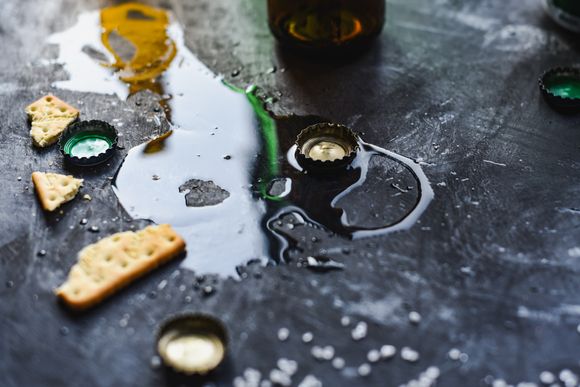
The pathological hallmark of cirrhosis is the development of fibrosis, which replaces the normal parenchyma. Fibrosis means that non-functional tissue accumulates in the liver, as a scar remains when wounds heal.
The most effective way to fight cirrhosis is prevention, as the disease is irreversible in itself.
In this case, the seeds of Milk thistle (Silybum marianum) and the roots of Baikal skullcap (Scutellaria baicalensis), Licorice (Glycyrrhiza uralensis), red sage, Chinese sage, tan shen, or danshen (Salvia miltiorrhiza), and East Asian arrowroot, kudzu (Pueraria lobata) have shown beneficial effects. [ref.1]
Q&A
Where is the liver located?
The liver is a large organ located mainly in the upper right abdomen, below the diaphragm and above the stomach.
When can you feel liver pain?
With liver pain, most people feel a dull, throbbing sensation in the upper right abdomen. Liver pain can also be felt as a stabbing sensation that takes your breath away. Sometimes this pain is accompanied by swelling or pain that spreads to the back or right shoulder blade.
The causes of liver pain are the same that were discussed in the article above, but also others: viral hepatitis, alcoholic cirrhosis, liver steatosis, abscess or cyst in the liver, Fitz-Hugh-Curtis syndrome, Bud-Chiari syndrome, thrombosis of the portal vein, liver cancer, liver injury or gallstones.
What are the symptoms of liver diesease?
Liver disease is not always associated with noticeable signs and symptoms. If they do occur, this may include:
- Skin and eyes that look yellowish (jaundice),
- Abdominal pain and swelling,
- Swelling of the legs and ankles,
- Dark color of urine,
- Pale stool color,
- Chronic fatigue,
- Itchy skin,
- Easy bruising,
- Nausea or vomiting,
- Loss of appetite.
